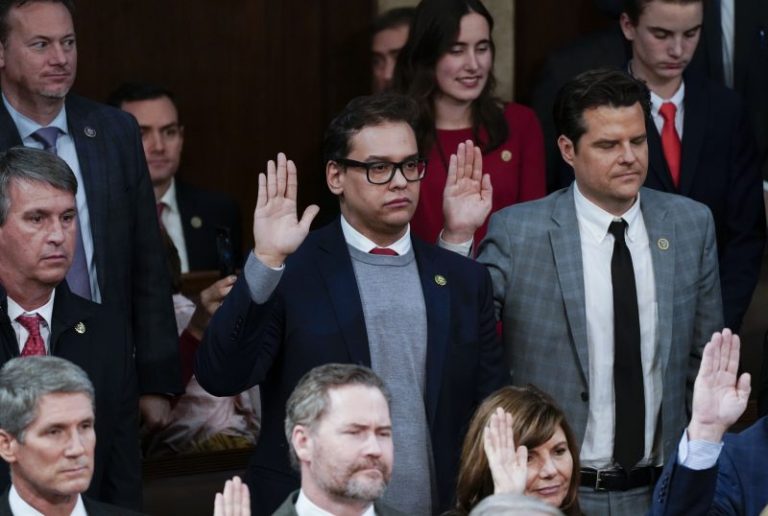Nassau County Republicans on Wednesday called on Rep. George Santos (R-N.Y.) to resign immediately after the newly elected lawmaker admitted he fabricated key details of his background and failed to explain questions about his campaign finances.
Chairman Joseph G. Cairo Jr. of the Nassau County Republican Committee, which had initially backed Santos’s candidacy, said Wednesday that campaign was full of lies and deceit. “I am calling for his immediate resignation,’ Cairo said.
A spokesperson for Santos did not immediately respond to an email seeking comment.
Cairo was joined in the county’s Long Island headquarters by several local Republican officials who echoed the call for their fellow party member to quit.
Santos was elected in November to represent the 3rd District of New York, flipping a crucial seat for the Republican Party. A firestorm ensued last month after the New York Times and others outlined apparent fabrications in Santos’s work and educational background and personal history.
“If I disappointed anyone by my résumé embellishment, I’m sorry,” Santos, who has denied any criminal wrongdoing in the United States or elsewhere, told WABC radio in New York.
Democrats have demanded his resignation, and two Democratic New York colleagues, Reps. Ritchie Torres and Daniel Goldman, filed an ethics complaint on Tuesday. Republican leaders, including House Speaker Kevin McCarthy (R-Calif.), have said the Santos matter will be dealt with internally.

